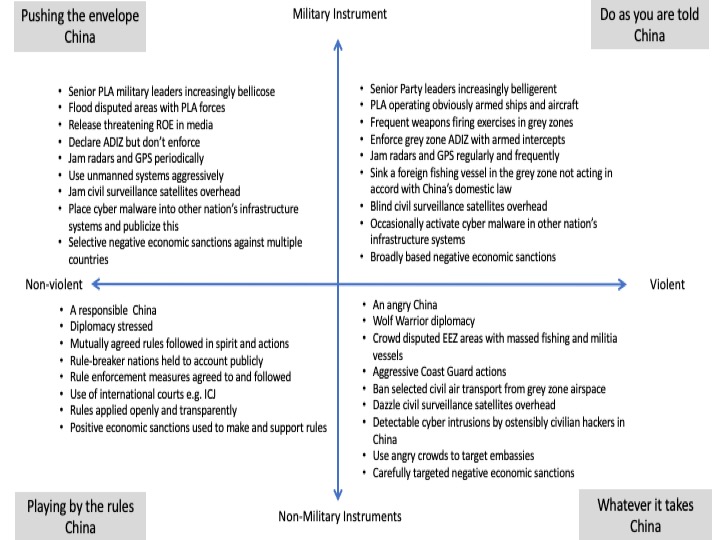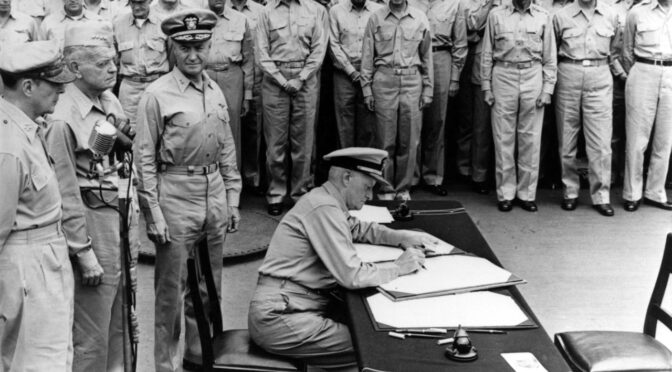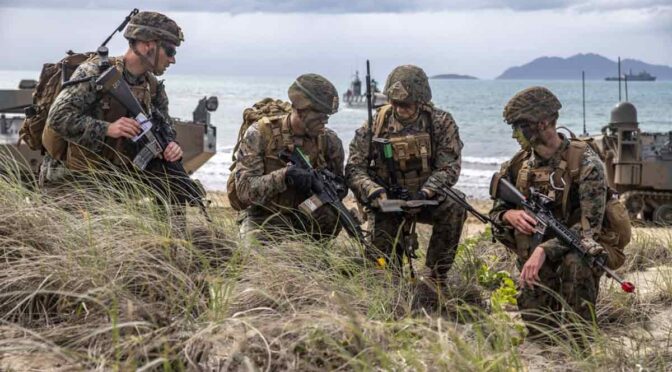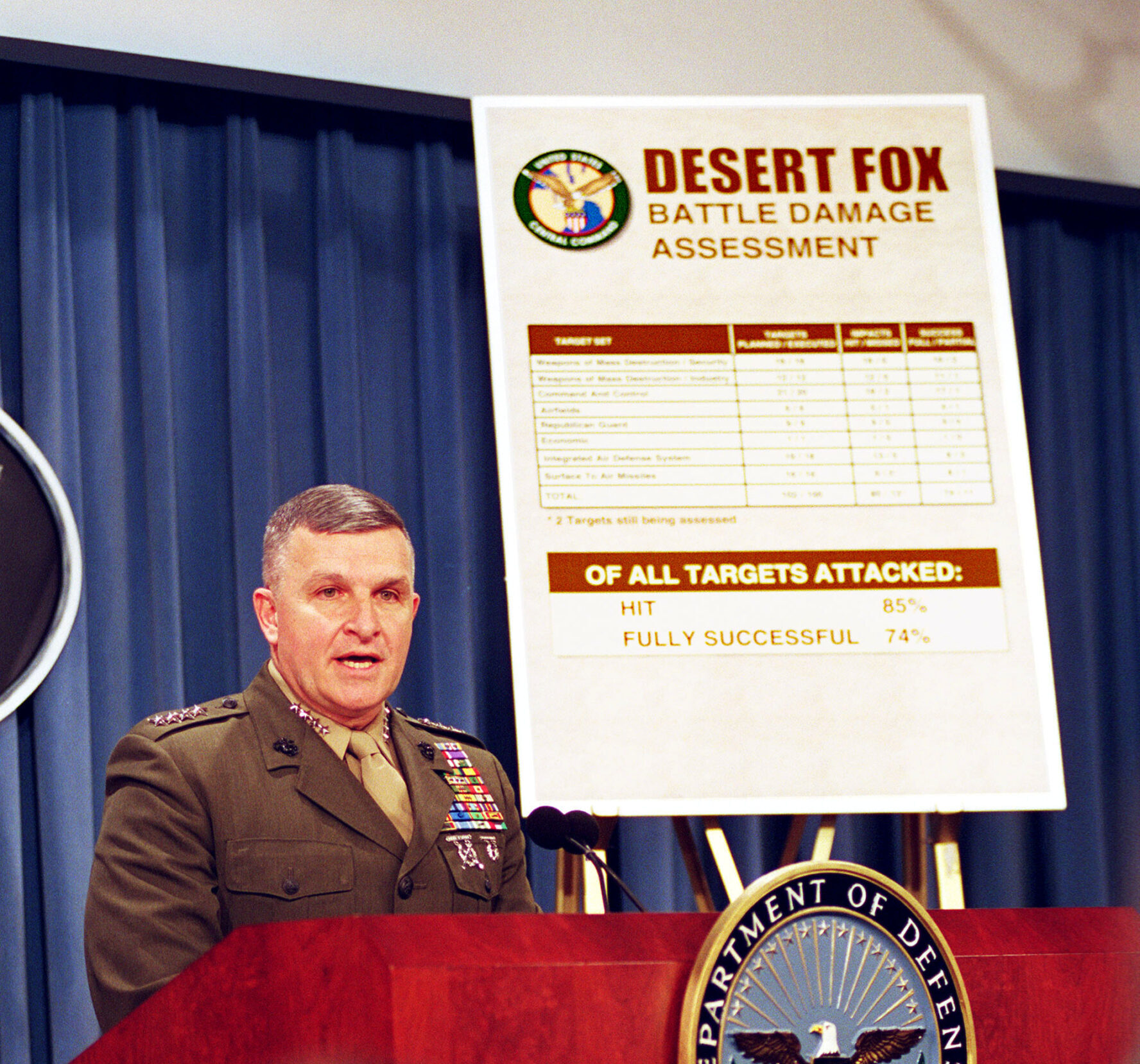By Michael A. Dennis and Anand Toprani
Part One introduced readers to an idea, Modern Monetary Theory (MMT), which challenges many of the shibboleths of public finance, most notably the desirability of balanced budgets. In The Deficit Myth, author Stephanie Kelton described her conversion to MMT as a Copernican moment in which the scales suddenly fell from her eyes. She now understood that currency “issuers” have utterly different problems than currency “users.”
To illustrate this point, Kelton described a thought experiment she conducted while working in the U.S. Senate. She asked her fellow staffers on the Budget Committee if they would abolish the U.S. national debt and nearly all agreed. She then asked if they would rid the world of Treasury bills. The very same people now hesitated, realizing instinctively that Treasury bills and the national debt are identical – the two sides of the government ledger that must balance.
Subconsciously, far too many public officials and national security professionals remain in thrall to a Gold Standard mentality about finance – specifically the notion that a paper currency must be “backed up” by something precious to have any value. During the heyday of the Gold Standard before 1914, a nation’s money supply was tied to the quantity of gold it possessed, but the last remnants of that system vanished in 1971, when President Richard Nixon refused to convert U.S. dollars for gold.
As Kelton realized, the end of the Gold Standard did not mean an end to Gold Standard thinking. Even those well-versed in financial matters could not grasp that the supply of money was not tied to the supply of some metal stored in a vault.
The Peril and Power of MMT
The pandemic has shown MMT’s power, although proponents have not really claimed it as their vindication. Instead, the pandemic has become, like the 2008 Financial Crisis, another demonstration of John Maynard Keynes’ continuing relevance. This is a welcome development, but Keynes is perhaps not as useful for dealing with the challenges we face moving forward. If Copernicus removed Earth from the center of the solar system, MMT essentially removes money from the center of economics and replaces it with politics – who gets what, when, and how in Harold Lasswell’s immortal turn of phrase.
Without resorting to scaremongering about “hyperinflation,” there are plenty of legitimate criticisms of MMT. Kelton unfortunately relied on bad history in the service of good politics. For instance, she claimed that “Deficits did not stop Franklin Roosevelt from implementing the New Deal,” which echoes right-wing condemnations of FDR more than the judgments of sober historians. She also asserted that there is a causal relationship rather than just a correlation between periods of deficit reduction and financial crises. Boiling down a number of 19th century panics or the collapse of the international financial system after 1929 to American presidents’ debt reduction is a form of historical reductionism that obscures the complex sources of global financial crises. It is no different than claiming that the 2008 crisis was the fault of minority U.S. homeowners defaulting on their mortgages.
At this point, supporters of MMT might accuse this article of historical nitpicking. The authors would counter that any political program is stronger if rests upon a solid historical foundation.
There are also numerous reasons to be skeptical of MMT from the perspective of political economy (the interrelationship of political and economic affairs). Supposedly, monetary sovereigns have no deficit constraints if they control their own monetary supply and borrow in their own currency. This is true but only up to a point.
First of all, conflating monetary sovereignty with being a currency issuer seems a rather narrow definition of sovereignty. According to the Mundell-Fleming Trilemma, if a government chooses to embrace monetary sovereignty (narrowly defined as an independent monetary and fiscal policy), it must choose between stable exchange rates and capital mobility. During the Bretton Woods era, the nations of the developed world chose the former, and afterward, the latter. There were many reasons they went in these directions, but they had to make a choice. Once a country has committed itself to capital mobility and independent monetary/fiscal policy, it must accept the risks posed by fluctuating interest rates.
Additionally, although its supporters never acknowledge it, MMT poses risks for countries that must purchase large quantities of goods in foreign currencies even if they are monetary sovereigns. Consider the example of Britain, which is dependent on imports of any number of goods as well as capital for its financial services sector. One term that never appears in The Deficit Myth is the “twin-deficits hypothesis” – the idea that government deficits might worsen a nation’s trade balance by encouraging domestic consumption, which can raise domestic prices if the economy is at or near capacity or encourage imports. Unless earnings by foreigners are converted into bonds to cover government deficits, the importing nation will suffer currency depreciation.
This is a real danger for all countries that must purchase goods in foreign currencies. While Britain has monetary sovereignty, what would happen to its exchange rate if its budget deficit causes its current-account deficit to balloon? Either its exchange rates will deteriorate, which will happen for a country dependent on imports, or it must impose capital controls. Keynes was not afraid of capital controls and had a clear preference for limited external trade but adopting his mindset would entail a radical transformation of British society.
Furthermore, what about all the countries that do not have to worry about the deficit constraint but are not monetary sovereigns? The German government, for example, can borrow in its own currency, but it is not a currency issuer – rather, it is the European Central Bank. Nevertheless, the nominal interest rate on German debt has been 1% or less since 2012. Not every member of the Eurozone enjoys such a luxury – why? Is it because Germany is such a valued customer or because it generates massive current-account surpluses? Despite this uncertainty, Germany enjoys considerable fiscal flexibility even though, according to MMT, it should not.
The reality is that MMT, while a compelling theory for understanding how states can use their control of money to achieve specific political ends, has little to say about the structure of economies or how best to allocate resources. As our colleague Mark Blyth put it in his inimitable fashion, MMT assumes: “Get the money right and everything else follows.”
The example of Germany shows that MMT has it entirely backward – states must get the economy “right” before they can take advantage of the monetary/fiscal opportunities of MMT. Specifically, the Germans can afford to ignore deficits today because they spent decades building an industrial Exportweltmeister that is the envy of the world. It is the sacrifices of ordinary Germans that makes their nation such an appealing counterparty rather than the worries of German elites about hyperinflation and rejection of budget deficits.
The Ironies of MMT
For an idea associated with the social-democratic left, MMT shares neoliberalism’s dim view of democratic oversight. Kelton is critical of the Federal Reserve’s technocratic management, with its inflation phobia and search for the “Non-Accelerating Inflation Rate of Unemployment” (NAIRU). Granted, Uncle Sam’s track record at managing tax policy to compensate for inflation hardly inspires confidence, either – as evidenced during the 1960s, when taxes could not reduce consumption fast enough during the boom in spending resulting from the Vietnam War and the Great Society. Therefore, Kelton wants to substitute rule by central bankers with automatic legislative stabilizers that modify government spending to account for inflation or unemployment. In other words, she is substituting one form of technocratic governance by financiers for another led by MMT economists.
Implementing such a system depends less on economic persuasion than political power. Such power is essential for stabilizing this arrangement at home and abroad. We have already seen, however, that some nations can only do the former but not latter. In fact, the only true monetary sovereign capable of fulfilling the promise of MMT is also the closest thing the world has to a hegemon – the United States.
The United States is a monetary hegemon because the world is denominated in dollars, not renminbi, sterling, euros, or yen. Despite the rise of China, the U.S. dollar still accounts for over 60% of central bank reserves and over 40% of all cross-border loans, international debt securities, global trade invoicing, and payments through the SWIFT system (the Society for Worldwide Interbank Financial Telecommunications, which governs how banks communicate financial transactions across international borders). This hegemony is not without its costs – a higher dollar makes U.S. exports less competitive – but it allows the United States to exert a degree of influence over world affairs beyond what its other instruments of national power could deliver by themselves.
The Risk of Ignoring the Power Pyramid
Given the extent of this power, it is remarkable that the United States has done so much to undermine Susan Strange’s pyramid of national power, described in Part One: military force, productive capacity, financial strength, knowledge production, and maintenance. Whether by restricting immigration, cutting the funding for research and development, or imposing sanctions with an unprecedented alacrity against its allies as well as its rivals, administrations of both parties have displayed little awareness of the factors that made the United States a great power.
As a result, they have presided over the gradual evaporation of the United States’ technological edge. For example, the United States, once the source of the world’s most powerful computer chip designs, is no longer the world’s leader in this vital technology. The Taiwan Semiconductor Manufacturing Company (TSMC) is the most advanced fabrication plant in the world capable of rendering the 5 nm chips that lie at the heart of Apple’s future laptops and phones.
People – and not just Americans – pay for these chips and the products housing them in dollars, but how much longer will that be the case in a world where the “most important” real estate for the world economy is in Taiwan rather the United States? Fortunately, Taiwan remains a de facto U.S. ally, but what happens if China achieves its goal of chip independence –a quest fueled, in part, by the Trump and Biden administrations’ restrictive trade policies?
This transition of technological power away from the United States is evident in the most ordinary of circumstances. Consider one of the most-popular apps on the phones of America’s youth: TikTok. Despite the fact that TikTok’s Chinese owner, ByteDance, is not part of an industry that benefited from Chinese government patronage, the AI in TikTok is apparently beyond the skills of U.S. programmers, which explains the U.S. government’s wariness toward TikTok’s Chinese origins. U.S. government efforts to engineer that company’s sale to an American firm appear to have stalled, but Washington has nonetheless set a dangerous precedent – the United States relied on political coercion to stem the dissemination of a superior Chinese product irrespective of consumer preferences.
It might seem ridiculous to national security professionals to think that China’s development of an app to share user-generated videos presages a geopolitical revolution, but consider the following point. Despite crushing Nazi Germany and sending the first man into space, the Soviet Union never produced something that an American firm could not match or better, much less a consumer good that captured the United States’ youth demographic.
Perhaps worse, the country is discouraging the best means of redressing the qualitative difference between Chinese and U.S. firms: immigration. These immigrants play a vital role in the worldwide knowledge economy – the vaccines Americans are counting on to deliver them from the pandemic are the result of small firms populated by immigrants either in the United States or, in the case of the Pfizer vaccine, in Germany. In the alternative universe where Donald Trump won a second term in 2020, U.S. research productivity would further suffer due to the restrictions on visas for graduate students and postdocs in the physical and biomedical sciences. U.S. universities have already taken a financial hit since foreign students often pay the retail tuition price, especially students from China.
MMT: An Incomplete Solution
If MMT is the answer to some of the most challenging threats confronting the United States – notably the transition to a green economy – Americans cannot afford to forsake the preservation of U.S. monetary hegemony. U.S. hegemony does not rely on the crude metrics of earlier generations – numbers of soldiers and weapons, or steel, coal, and oil production – but rather on something both more ephemeral and durable: the confidence of the rest of the world that it can benefit from U.S. hegemony.
If debt is not really the constraint but rather inflation, as MMT advocates contend, the next question Americans must answer is how the government should mobilize its seemingly unlimited fiscal resources. Military strength is a vital component of Strange’s pyramid, but it seems the United States has reached the point of diminishing marginal returns. New weapons take too long to develop and cost too much to mass produce. Despite record budgets, U.S. military aircraft and ship readiness rates are deficient, which has problematic implications for the readiness of the rest of the military, and the Pentagon has been of modest help during the pandemic.
Rather than continuing to pour money down the defense sinkhole to purchase new weapons when it cannot maintain the ones the country already has, the United States should be using government spending to “build back” the U.S. entrepreneurial state to confront the challenges posed by climate change, recover from the pandemic, and repair the nation’s physical and human infrastructure. A national government that is free from the sorts of constraints that limit private firms can and should spearhead this effort.
There are still some who would argue that the United States should rely on the “invisible hand” to allocate capital. It is an alluring theory, but U.S. historical experience has thoroughly undercut it. After World War II, it was the entrepreneurial state rather than “heroic capitalists” that bore the risks to invest in new knowledge, and which continues to pay dividends today. Private firms that are beholden to shareholders demanding immediate returns on their investment simply cannot undertake the kinds of long-term, speculative investment in pure (as opposed to practical) R&D required to generate genuine novelty.
Just as the U.S. government has a monopoly on the legitimate use of force and printing money, so too does it have a near-monopoly on the ability to take risks over long-time horizons. Recall that it was U.S. Army ordnance in the 19th century that perfected the development of standardized parts over a 40-year-plus period in its arsenals. In the 20thcentury, the U.S. government provided invaluable support to several industries, including aviation, nuclear power, computing, and space. This should not imply that governments are wiser than private investors, only that the former can afford to place large bets that they might lose; after all, they are gambling with the house’s money.
These sorts of investments rarely seem justified under normal circumstances, but they can generate enormous windfalls. One of the many legacies of government sponsorship of R&D in the United States was a biomedical research system that allowed for the rapid development of the mRNA vaccines that are taming COVID-19. Whether it was supporting research on DNA and RNA that venture capitalists ignored or the vast array of technologies now embedded in smartphones, the U.S. government was essential in “bringing good things to life.” That the latter was an advertising slogan from General Electric from 1980 to 2003 only reinforces a collective historical amnesia, just as Americans forget how money actually works.
Not All Spending is Equal
Critics of MMT are right about one thing – not all spending is equal and running up deficits over the long run without enhancing the nation’s productive capacity and its economic attractiveness will undermine U.S. monetary hegemony. The goal of an expansive fiscal policy should be the creation of an economy in which people from all over the world wish to continue participating, which in turn will preserve the dollar as the preferred instrument for both debt and credit.
There are steps that the U.S. government can take that would generate dividends for the United States’ economic and national security. The government could, for example, revisit the 1958 National Defense Education Act that resulted from the fear following Sputnik’slaunch that the United States was falling behind the Soviet Union. A new education act would enable training up the workforce that contemporary industries demand. It should fund industrial apprenticeships in both civilian and defense industries, as well as the vocational training that the United States has allowed to wither. The country might also turn the surfeit of advanced degree graduates into managers of government investments in fields vital to its national health instead of stranding them as poorly paid adjuncts in the U.S. educational gulag.
Perhaps the great irony of contemporary American political economy is that many of the proponents of MMT are also the biggest critics of the other aspects of U.S. power that make MMT possible. The United States can afford the Green New Deal as well as providing universal health care and other necessities – but only as part of a wider process of “keeping America great.”
Politics truly makes for strange bedfellows.
Michael A. Dennis and Anand Toprani are professors of strategy and policy at the U.S. Naval War College and visiting professors at Brown University. They wish to acknowledge their profound debt to their colleague, Brown University professor Mark Blyth, whose insights inspired this piece.
The views expressed here are Dennis and Toprani’s and not necessarily those of the U.S. government.
Featured Image: U.S. Capitol Building is superimposed over scaffolding and currency imagery. (Credit: Christina Animashaun)






